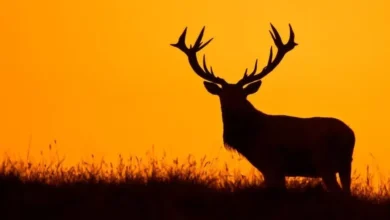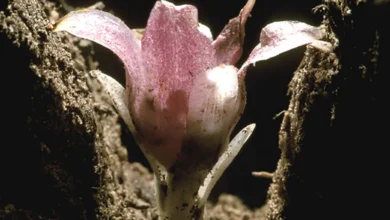World Nature conservation day, how technology helps wildlife conservation

Statistics are staggering. And frightening. Globally, more than 45,000 species are threatened with extinction, including 26% mammals, 41% amphibians, 12% birds, 37% sharks and rays, 21% reptiles, 34% conifers, 28% selected crustaceans, and 71% cycads, according to The International Union for Conservation of Nature’s (IUCN) Red List of Threatened Species(2024-1), the world’s most comprehensive information source on the global conservation status of animal, fungi and plant species. And that’s why there is so much buzz around wildlife conservation that aims to protect plant and animal species as the human population encroaches on their resources.
Worldwide, advanced technology – drones, camera traps, satellites, acoustic monitoring, remote sensing methods that use lasers to estimate the 3D structure of the target area, be it a forest canopy or cliff face – is being used now for wildlife conservation. Virtual Reality (VR) and Augmented Reality (AR) have the potential to revolutionise the field of wildlife conservation. The importance of technology can be gauged from the fact that the environ- ment, conservation and wildlife organisations market size has grown strongly in recent years, it will grow from $26.22 billion in 2023 to $36.65 billion in 2028.
In India, wildlife conservation through technology is gaining ground. in September 2022, E-Gravity, an engineering company launched a GPS-based radio collar for tracking wild elephants; The Habitats Trust is leveraging geospatial data to understand India’s grassland coverage, using subsea robotics to enhance and expedite coral reef monitoring efforts, and harnessing machine intelligence (ML, AI, DL) to optimise conservation efforts. The Wildlife Tech Incubator aims to foster India-specific innovations in wildlife conservation, the Indian Institute of Science has been working on improving technology that helps wildlife researchers and forest departments while the Tree Foundation has used satellite tags to monitor turtles – information about their feeding grounds and congregation paths are passed on to commercial fishermen so that the turtles are not ensnared and killed.
At the forefront of wildlife conservation technology in India is Leopard Tech Labs, a Kanjirappally (Kottayam, Kerala)-based company that was founded in 2017 by two faculty members and two alumni of the Amal Jyothi College of Engineering, Kanjirappally. Its Conservation Technology Division has created several applications (both for Android & iOS) designed to empower both conservationists and the general public in their efforts to protect wildlife. Here are a few apps/tools of Leopard Tech Labs that can be downloaded and used for wildlife conservation and awareness.
HAWK: HAWK is a wildlife crime intelligence gathering system to prevent illegal wildlife trade. With latest digital technology, the system consolidates all information to monitor criminal networks, criminal activities and provide actionable intelligence to the enforcement officials to undertake preventive measures against a wildlife trafficking crime. or a possible crime scenario. According to the World Wide Fund for Nature (WWF), wildlife trafficking is the fourth largest form of transnational organised crime worth an estimated £15 billion per annum.
This app acquires greater importance because India is not only a major source, but also a transit, and destination country for trafficked wildlife and wildlife products – most common wildlife and wildlife prod-ucts that were seized from being smuggled out of India are ivory, turtles and tortoises (especially the Indian star tortoise), and red sandalwood. India is also fast becoming a major hub for pangolin trafficking and the trade in tiger parts continues unabated (Source: Smuggling in India report 2020-2021).
Jumbo Radar: Jumbo Radar is a comprehensive tool to monitor elephant movements outside Protected Areas and to enable seamless collection and data analysis which in turn can minimise negative Human-Elephant interactions. The app is based on three years of extensive monitoring and profiling of individual elephants in the Gudalur Forest Division by The Shola Trust and the Tamil Nadu Forest Department, respectively.
Wildwatch: WildWatch is an integrated human wildlife conflict mitigation system that consists of multiple modules that work in tandem with each other to provide a streamlined and stable operating environment. When an Informer (a registered user of Wild Watch app) witnesses a wildlife conflict, he can use this app to report the incident. This alert is received by the nearest watcher with precise GPS location and other information.
Sarpa: Intended to streamline rescue of snakes from human habitations, Sarpa (Snake Awareness, Rescue & Protection App) helps minimise threats to snakes and humans, creates awareness among public regarding snakes and their important role in the ecosystem. So far, in Kerala alone, more than 40,000 snakes have been rescued through this app.
Anti-snare walk monitoring app: This is used to report and remove snare details from the forest area. Using this app, forest officers can report any snare they found while walking through the forest.
Save trees: This app aims to connect people around the world to save trees. If you see a tree being cut, you can post it on the app and notify like-minded people nearby.
Whale Shark rescue app: Reporting of whale sharks and other marine megafauna can be done. Users can take photo and video of whale shark or marine megafauna which are accidentally caught in the net or which are sighted during sailing. The app also works offline.










